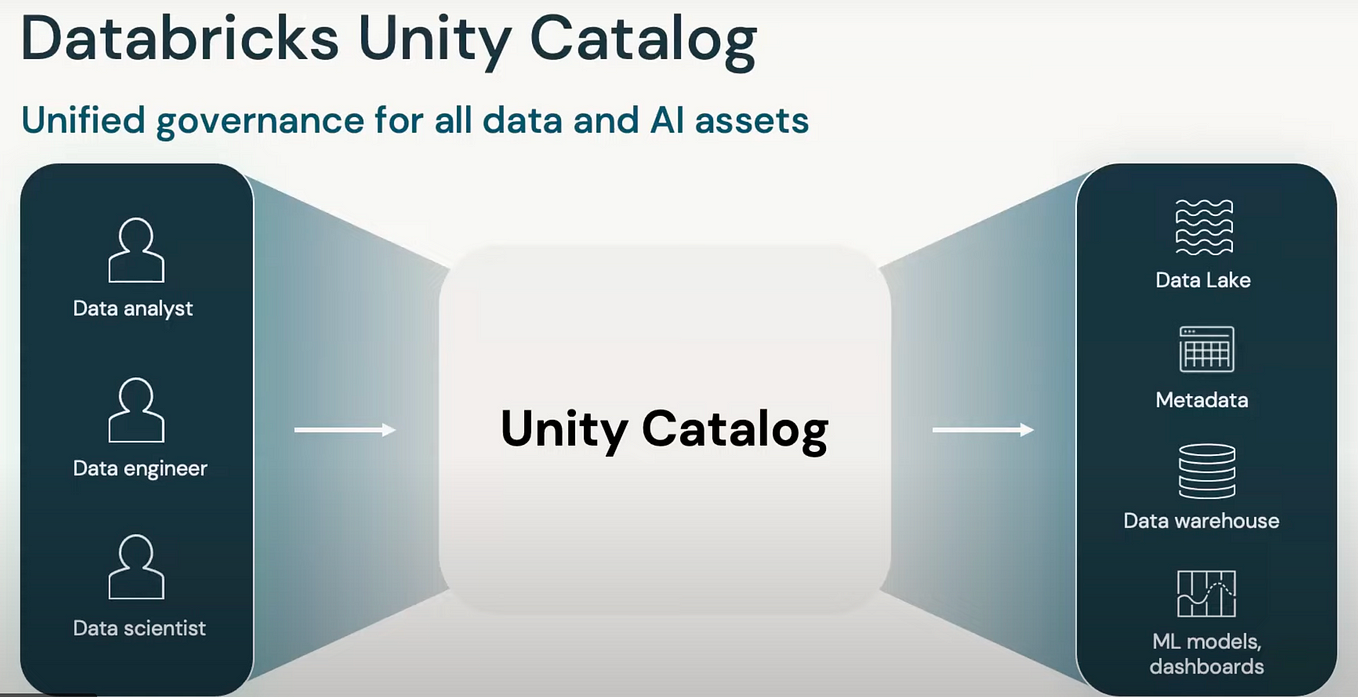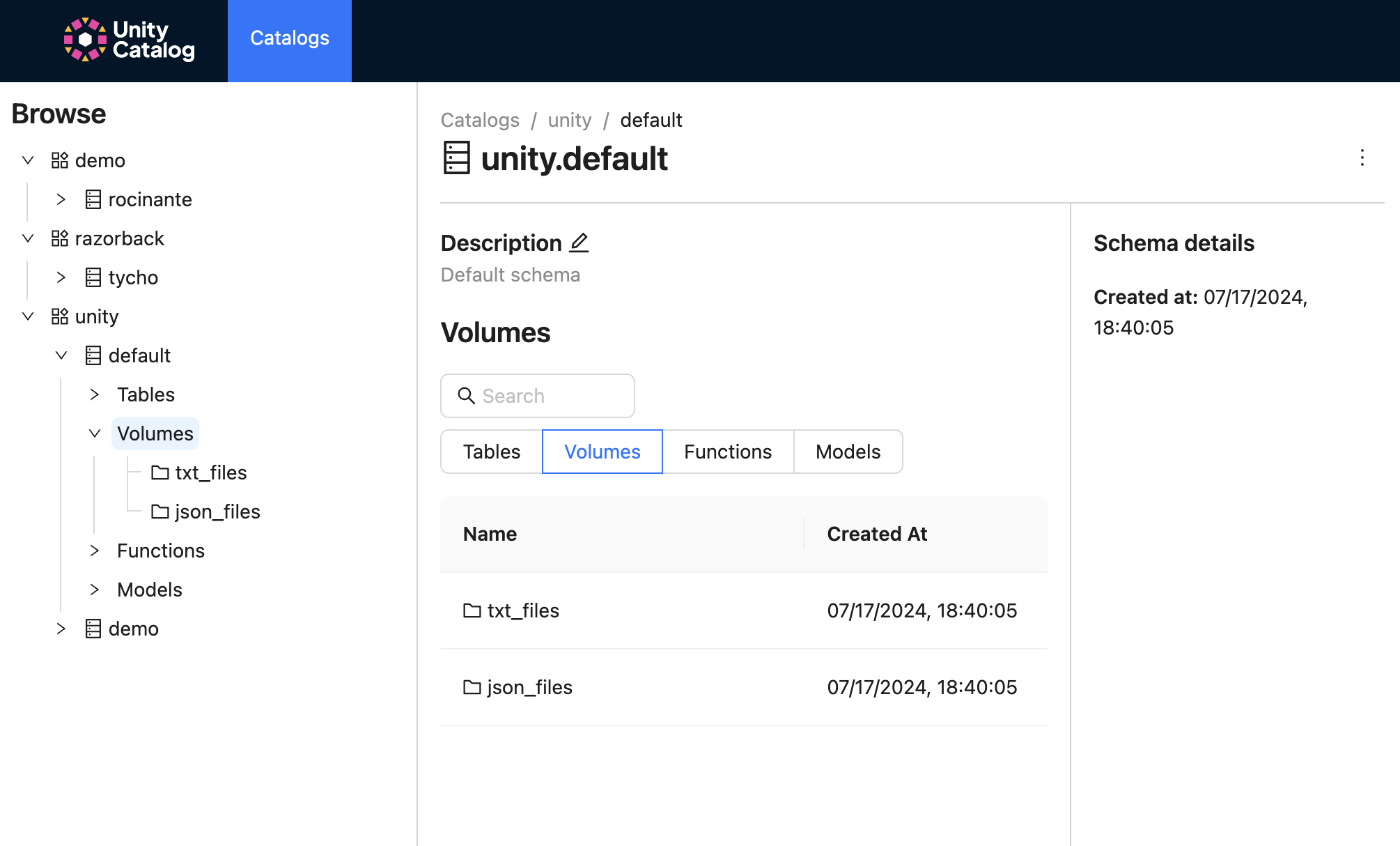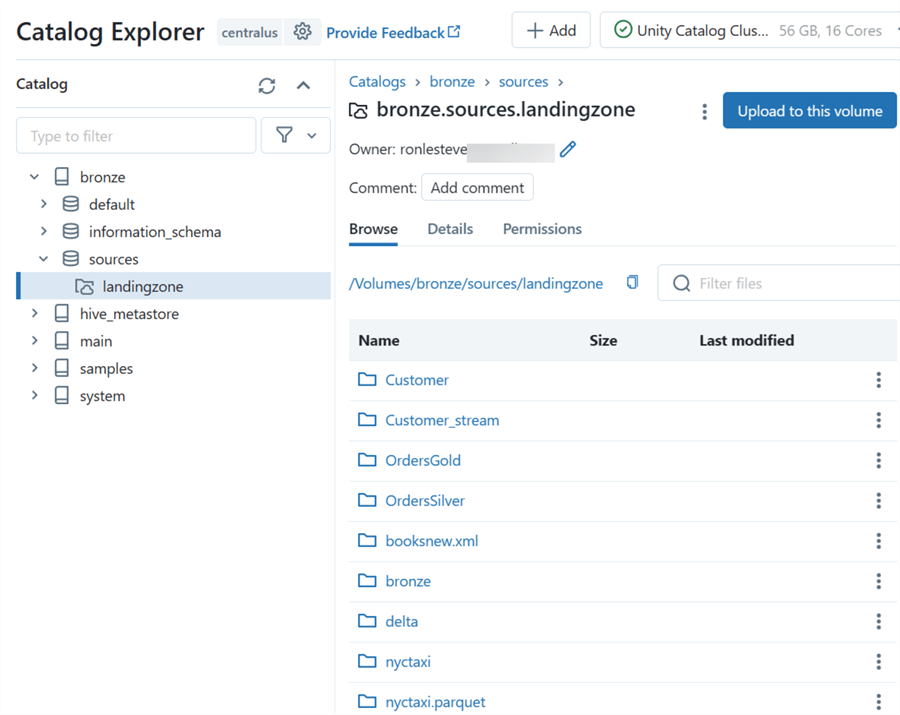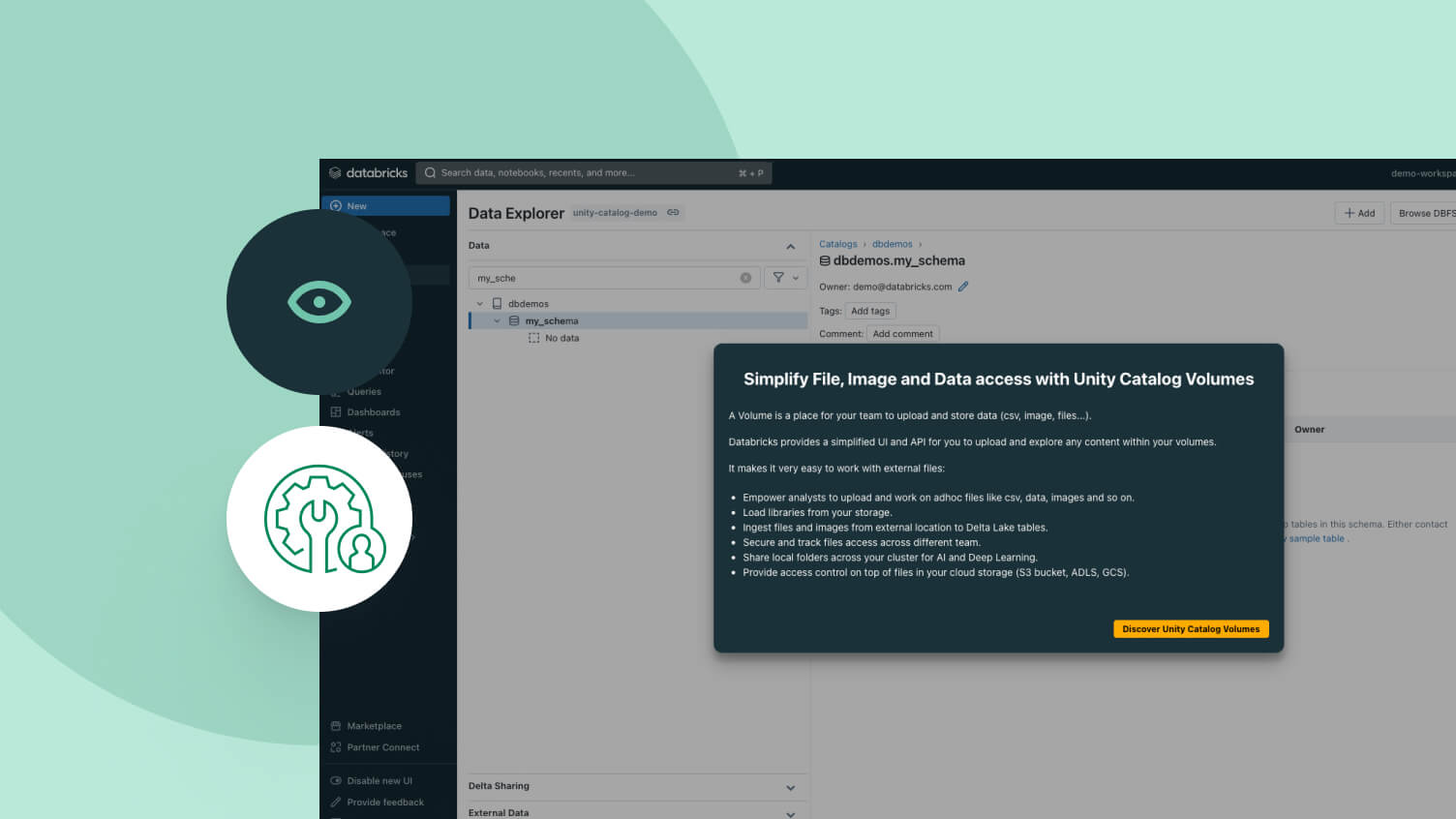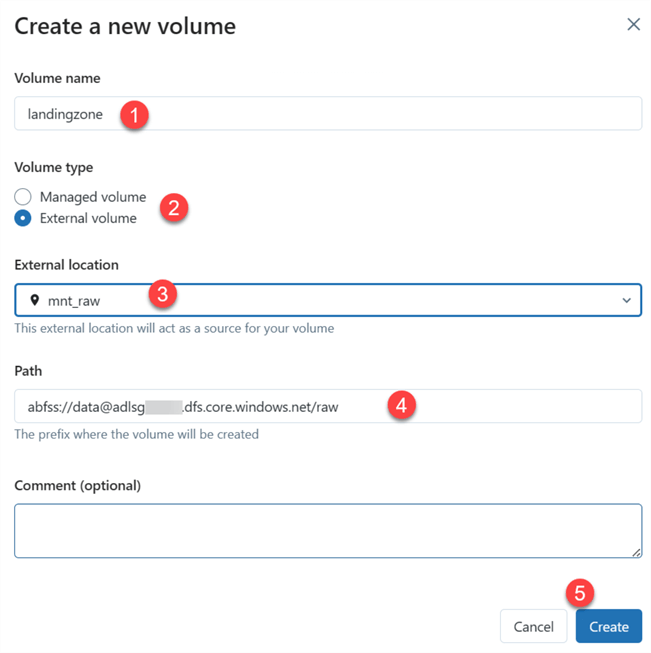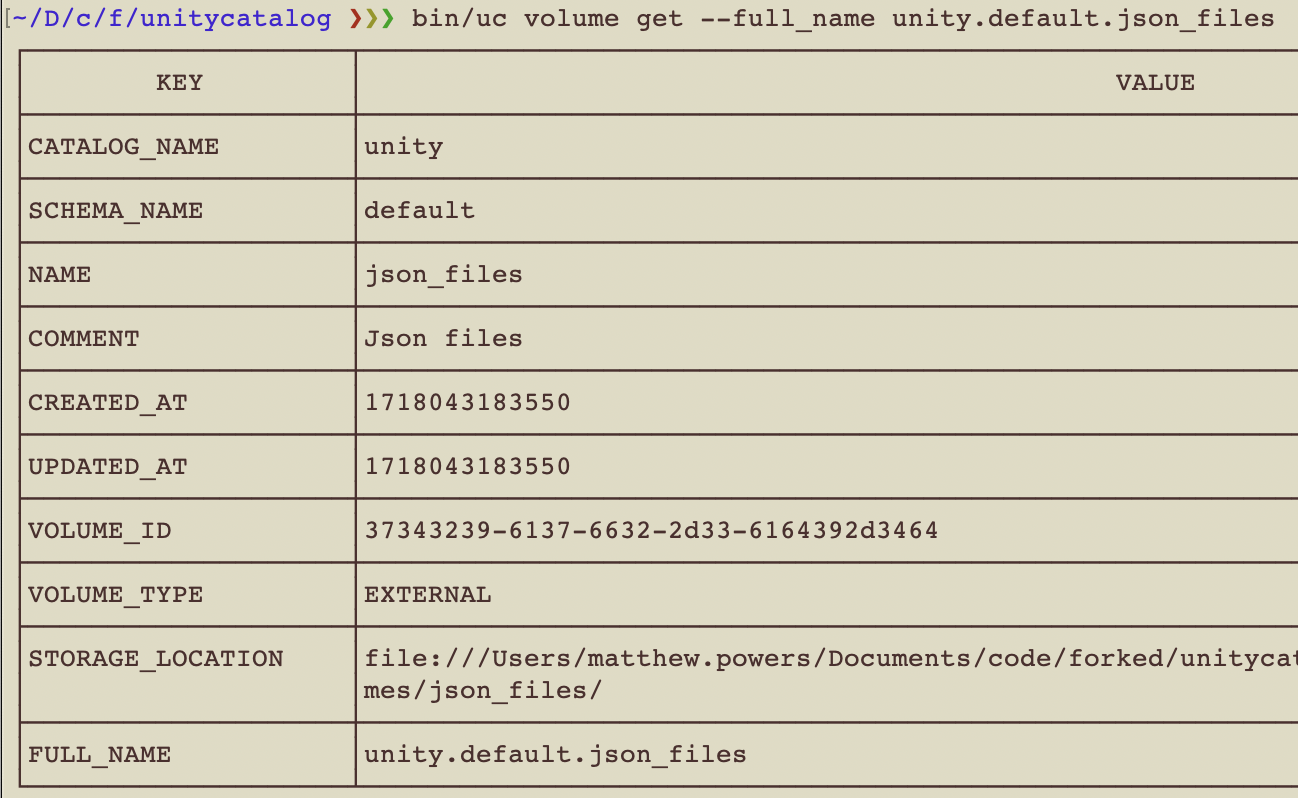Unity Catalog Volumes
Unity Catalog Volumes - In your azure databricks workspace, click catalog. This article contains syntax examples for creating, managing, and dropping. For instructions on uploading, managing, or working with files in volumes,. Volumes are unity catalog objects representing a logical volume of storage in a cloud object storage location. Volumes can be either managed, with unity catalog managing the full lifecycle and layout of the data in storage, or external, with unity catalog managing access to the data. Search or browse for the schema that you want to add the volume to and select it. To upload files to a unity catalog volume, do the following: Since its launch several years ago unity catalog has. To create a volume in catalog explorer: Catalog explorer provides options for common file management tasks for files stored with unity catalog volumes. You can access volumes using the same path regardless of the. Click upload files to volume. Volumes are unity catalog objects representing a logical volume of storage in a cloud object storage location. Unity catalog (uc) is the foundation for all governance and management of data objects in databricks data intelligence platform. This article contains syntax examples for creating, managing, and dropping. Click new > add data. Volumes are the third level in unity catalog’s hierarchical structure (catalog > schema > volume). To create a volume in catalog explorer: This includes attaching a storage account and enabling both managed and. Created within the default storage location of the containing schema. You can access volumes using the same path regardless of the. To interact with files in a volume, do the following: Created within the default storage location of the containing schema. There are two types of volumes: For instructions on uploading, managing, or working with files in volumes,. Volumes provide capabilities for accessing, storing, governing, and organizing files. Volumes are unity catalog objects representing a logical volume of storage in a cloud object storage location. There are two types of volumes: For instructions on uploading, managing, or working with files in volumes,. You can use unity catalog volumes or external locations to access data in cloud object storage. Volumes are unity catalog objects representing a logical volume of storage in a cloud object storage location. To interact with files in a volume, do the following: Search or browse for the schema that you want to add the volume to and select it. To create a volume in catalog explorer: Volumes provide capabilities for accessing, storing, governing,. Since its launch several years ago unity catalog has. To upload files to a unity catalog volume, do the following: Volumes are unity catalog objects representing a logical volume of storage in a cloud object storage location. Created within the default storage location of the containing schema. To interact with files in a volume, do the following: Volumes can be either managed, with unity catalog managing the full lifecycle and layout of the data in storage, or external, with unity catalog managing access to the data. Unity catalog adds new options for configuring secure access to raw data. Volumes represent a logical volume of storage in a cloud object storage location. To interact with files in a. Volumes represent a logical volume of storage in a cloud object storage location. There are two types of volumes: In your azure databricks workspace, click catalog. Select a volume or a directory inside a volume, or paste a volume. Volumes are the third level in unity catalog’s hierarchical structure (catalog > schema > volume). Unity catalog (uc) is the foundation for all governance and management of data objects in databricks data intelligence platform. Volumes provide capabilities for accessing, storing, governing,. This includes attaching a storage account and enabling both managed and. You can access volumes using the same path regardless of the. Volumes provide capabilities for accessing, storing, governing, and organizing files. In your azure databricks workspace, click catalog. Click upload files to volume. Volumes are the third level in unity catalog’s hierarchical structure (catalog > schema > volume). Volumes represent a logical volume of storage in a cloud object storage location. This article contains syntax examples for creating, managing, and dropping. To interact with files in a volume, do the following: Click upload files to volume. Catalog explorer provides options for common file management tasks for files stored with unity catalog volumes. Volumes are unity catalog objects representing a logical volume of storage in a cloud object storage location. Unity catalog adds new options for configuring secure access to raw data. Click upload files to volume. To create a volume in catalog explorer: You can access volumes using the same path regardless of the. You can use unity catalog volumes or external locations to access data in cloud object storage. Select a volume or a directory inside a volume, or paste a volume. Volumes provide capabilities for accessing, storing, governing,. Unity catalog adds new options for configuring secure access to raw data. To create a volume in catalog explorer: Since its launch several years ago unity catalog has. Search or browse for the schema that you want to add the volume to and select it. To upload files to a unity catalog volume, do the following: Volumes are unity catalog objects representing a logical volume of storage in a cloud object storage location. Catalog explorer provides options for common file management tasks for files stored with unity catalog volumes. Volumes represent a logical volume of storage in a cloud object storage location. Volumes are unity catalog objects representing a logical volume of storage in a cloud object storage location. You can access volumes using the same path regardless of the. Catalog explorer provides options for common file management tasks for files stored with unity catalog volumes. To interact with files in a volume, do the following: In your azure databricks workspace, click catalog. Volumes can be either managed, with unity catalog managing the full lifecycle and layout of the data in storage, or external, with unity catalog managing access to the data. Unity catalog (uc) is the foundation for all governance and management of data objects in databricks data intelligence platform.How to Create Unity Catalog Volumes in Azure Databricks
Unity Catalog Volumes. Unity Catalog Volumes, the latest… by Sharath
Unity Catalog Volumes. Unity Catalog Volumes, the latest… by Sharath
UI Unity Catalog
Databricks Unity Catalog and Volumes StepbyStep Guide
How to Create Unity Catalog Volumes in Azure Databricks
Unity Catalog Volumes Databricks
Databricks Unity Catalog and Volumes StepbyStep Guide
How to Create Unity Catalog Volumes in Azure Databricks
Volumes Unity Catalog
Select A Volume Or A Directory Inside A Volume, Or Paste A Volume.
Volumes Represent A Logical Volume Of Storage In A Cloud Object Storage Location.
To Interact With Files In A Volume, Do The Following:
Click Upload Files To Volume.
Related Post:


